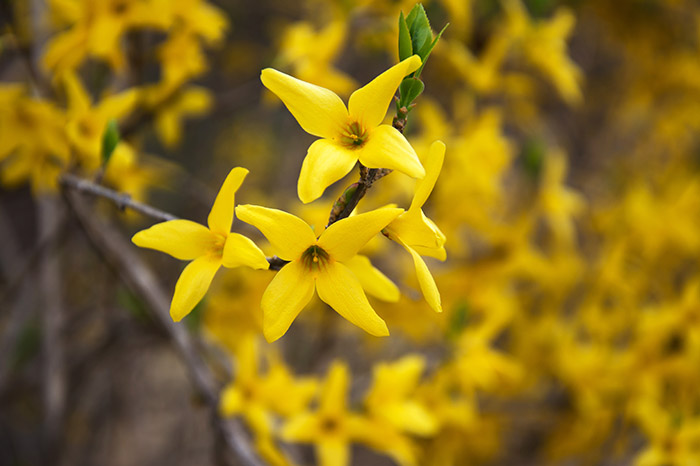
Urban Gardening: 4 Lessons to Live By When Gardening in the City
Urban gardening can be incredibly difficult! When we moved into our apartment in Brooklyn, I was very excited to have a backyard. It was a small cement backyard, but still a patch of private outdoor space in the big city. All I needed was a little greenery to soften the hard cement, an Adirondack chair, a barbecue grill, and I’d be in business. Or maybe not.
It has been a long, slow path to adding some greenery to my corner of the concrete jungle, and that path is strewn with dead plants. But I’ve learned a few things about urban gardening and maybe my lessons will help other would-be gardeners save some money and time.
Lesson 1: Squirrels are persistent buggers
The previous owners of our apartment left a few plants behind for us to start our urban garden with, including some chives. I liked the idea of growing something I could eat and began imagining a summer of endless baked potatoes. I put the pot right in the middle of our new patio table so I wouldn’t forget to water it.
I came out to water it the next day and found the pot on the table and the chives dug up and carried across to the other side of the yard. They were still alive so I replanted them and watered them. Then the same thing happened the next day. And the next. And the one after that, too. All summer long, some strongly anti-chive squirrel dug up the herb almost daily and I replanted it just as often. It never killed it, but the plant didn’t exactly thrive. So I let it die over the winter and planned to start fresh with flowers in the spring.
Lesson 2: Flowers need sun…and room
Come May, I went to Home Depot and bought planter boxes, dirt and all kinds of lovely bright colored flowers to put in them —petunias, daisies, salvia and two azalea bushes. The latter seemed small so I planted them together to fill out a bigger planter.
I soon learned that “partial-to-full sun,” means more than the 90 minutes a day the sun manages to peek over the tops of the buildings that surround our yard. None of my flowers flowered and I mostly had a yard full of stringy green stalks that summer.
The azaleas actually thrived until they outgrew the pot, at which point the roots were too intertwined to replant one, and they soon withered and died together.
Lesson 3: Perennials don’t always come back
I did some research and learned that shade plants are often non-flowering. But you can introduce color and variety into your urban shade garden by buying all kinds of variegated plants. Just not at Home Depot. So I joined the Brooklyn Botanic Garden and went to its member plant sale where I bought all manner of very expensive variegated plants whose names I’ve forgotten. Their leaves were striped and polka dotted, various shades of green and yellow, even pink! I justified my $125 tab with the thought that most of these were perennials and so I was investing long-term in my garden.
Not quite. Turns out that my planter boxes don’t hold enough dirt to keep the plants warm in winter and about half of them died. I optimistically headed back to the Botanic Garden for exotic variegated perennials for two more summers before my husband suggested I go back to killing cheap Home Depot plants instead of expensive fancy ones.
Lesson 4: When you find what works, stick with it.
My Botanic Garden membership did not go unrewarded, however. One spring they gave every member a free forsythia, the official flower of Brooklyn. And you know what? More than ten years later I still have it! Forsythias clearly are our official flower because they are hardy, urban bushes and nearly impossible to kill.
So I decided that’s what I needed in my urban garden: Hardy, maybe even invasive plants that might just thrive in spite of me. I bought more forsythia, plus mint, thyme and oregano, all of which can be invasive in the ground but are merely persistent in pots. I’ve had some luck with hostas (they live for a few years at a time and don’t cost much. And each spring I buy a flat of impatiens to fill in. They aren’t my favorite flower—I still miss my exotic pink-leafed plants— but they’re cheap, they actually flower in the shade, and they usually make it through the summer.
Now that I have my little urban garden sorted I can finally buy that Adirondack chair, and maybe a lemonade pitcher.
Eileen Gunn is the founder of the family travel website FamiliesGo!. You can find her on Pinterest, Facebook, Twitter and Instagram. You can also read her post on caring for plants when you travel.


Sorry, the comment form is closed at this time.